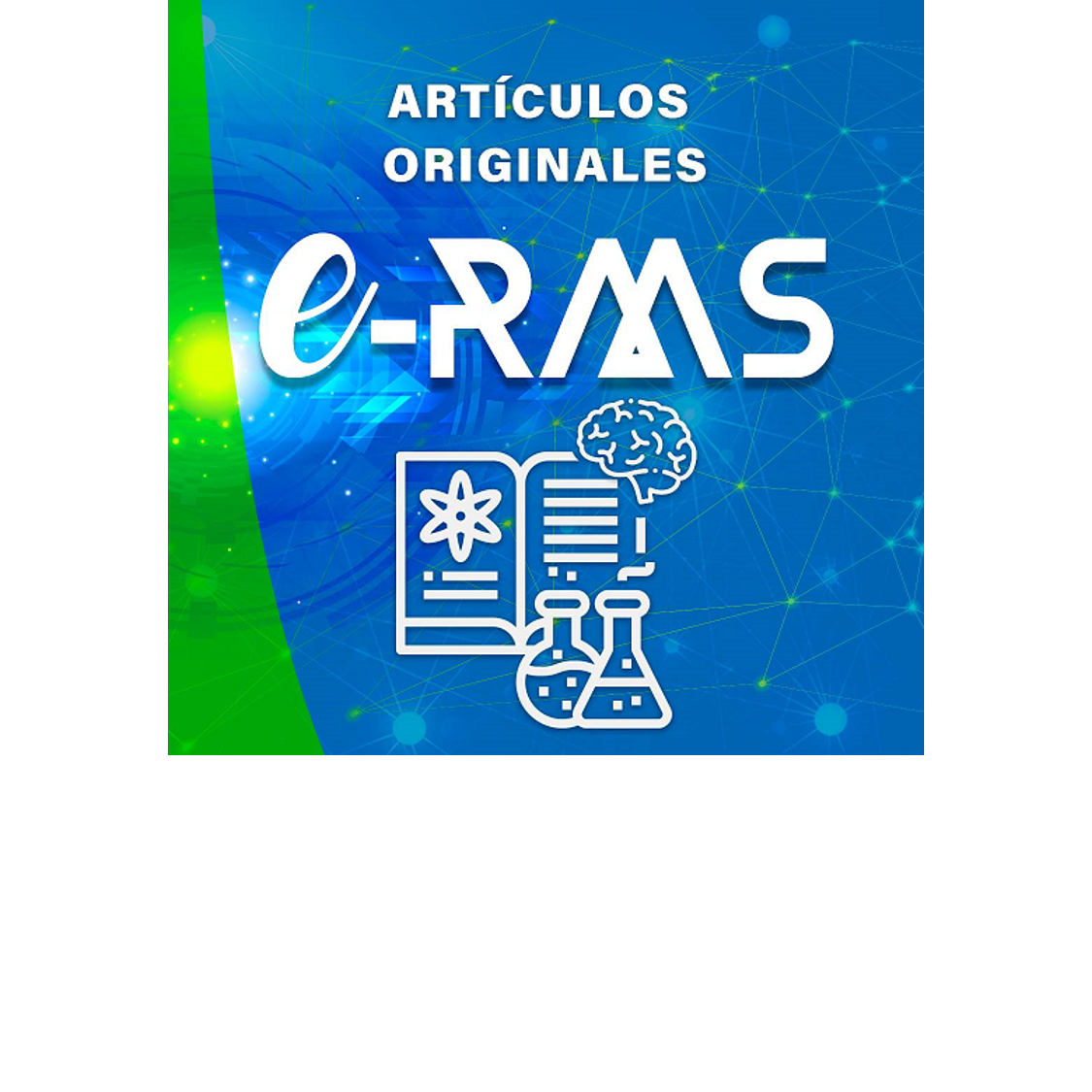Optimización y validación de modelos computacionales DFT, Ab Initio y G3/G4 para la caracterización físico-química de neurotransmisores en fase gaseosa
DOI:
https://doi.org/10.61286/e-rms.v3i.234Palabras clave:
L-DOPA, Dopamina, fase gaseosa, modelos computacionales, reacciones isodésmicas, neurodegenerativasResumen
La caracterización de la dopamina y su precursor, la L-DOPA, en fase gaseosa constituye un área de investigación con marcada escasez de datos experimentales. Comprender las propiedades físico-químicas intrínsecas de estas especies es esencial, dado su papel central en la neurotransmisión y su implicación directa en patologías neurodegenerativas como la enfermedad de Parkinson. Para abordar esta brecha, se empleó una metodología computacional avanzada que integra la Teoría del Funcional de la Densidad (DFT), métodos Ab Initio y teorías compuestas G3/G4. Esta aproximación permitió determinar con alta precisión la estabilidad termodinámica, la estructura molecular y la reactividad protónica de ambas moléculas. Los cálculos incluyeron un análisis conformacional exhaustivo, orientado a identificar los rotámeros más estables, los cuales fueron optimizados para obtener sus energías electrónicas, entalpías de formación y energías libres de Gibbs. Los resultados revelan que el rotámero G1a representa la conformación más estable de la dopamina neutra, aunque las diferencias energéticas con otros rotámeros como G2 y T son marginales, oscilando entre 2 y 5 kJ/mol según el método empleado. La aplicación de reacciones isodésmicas y de atomización resultó clave para mejorar la exactitud de las entalpías de formación, al mitigar errores sistemáticos inherentes a los cálculos teóricos. En síntesis, este estudio establece un conjunto de datos de referencia de alta calidad, fundamentales para la validación de modelos computacionales futuros y para el avance en la comprensión de la química fundamental de neurotransmisores en condiciones libres de solventes.
Descargas
Citas
Abboud, J. (2003). Protonation of cubane in the gas phase: a high-level Ab initio and DFT study. Angewandte Chemie International Edition, 42(9), 1044–1046. https://doi.org/10.1002/anie.200390269
Abboud, J. L., Castaño, O., Dávalos, J. Z., Jiménez, P., Gomperts, R., Müller, P., & Roux, M. V. (2002). Intrinsic (gas phase) thermodynamic stability of 2-adamantyl cation. Its bearing on the solvolysis rates of 2-adamantyl derivatives. The Journal of organic chemistry, 67(4), 1057–1060. https://doi.org/10.1021/jo016206f
Armentrout, P. B. (2000). Entropy measurements and the kinetic method: A statistically meaningful approach. Journal of the American Society for Mass Spectrometry, 11(5), 371–379. https://doi.org/10.1016/S1044-0305(00)00102-1
Babaei Bidmeshki, N., Azar, T., Ziaie, F., & Janbazi, M. (2021). Unravelling the nature of the alpha-keratin EPR signal: an ab initio study. Physical Chemistry Chemical Physics, 23(11), 6815–6822. https://doi.org/10.1039/d0cp05930g
Blaudeau, J. P., McGrath, M. P., Curtiss, L. A., & Radom, L. (1997). Extension of Gaussian-2 (G2) theory to molecules containing third-row atoms K and Ca. The Journal of Chemical Physics, 107(13), 5016–5021. https://doi.org/10.1063/1.474868
Buglak, A. A. (2024). Antioxidant properties of alpha-amino acids: a density functional theory viewpoint. Free Radical Research, 58(6-7), 380–387. https://doi.org/10.1080/10715762.2024.2385338
Cuba, J. P. B., Alves, G. G. B., Galindo, L. A., Paulin, J. V., & Batagin-Neto, A. (2021). Sulfonated melanin derivatives: theoretical evaluation of local reactivities and chemical structures. Journal of Molecular Modeling, 27(12), Article 362. https://doi.org/10.1007/s00894-021-04982-z
Curtiss, L. A., Raghavachari, K., Redfern, P. C., & Pople, J. A. (1999). Investigation of the use of B3LYP zero-point energies and geometries in the calculation of enthalpies of formation. Chemical Physics Letters, 270(4-6), 437–442. https://doi.org/10.1016/S0009-2614(97)00344-3
Curtiss, L. A., Raghavachari, K., Redfern, P. C., Rassolov, V., & Pople, J. A. (1998). Gaussian-3 (G3) theory for molecules containing first and second-row atoms. The Journal of Chemical Physics, 109(18), 7764–7776. https://doi.org/10.1063/1.477422
Dauer, W., & Przedborski, S. (2003). Parkinson's Disease: Mechanisms and Treatments. Neuron, 39(6), 889–909. https://doi.org/10.1016/S0896-6273(03)00561-4
de Oliveira, T. A., Martin, C. S., Rubira, R. J. G., de Barros, A., Mazali, I. O., Zidoi, L. P., Batagin-Neto, A., & Constantino, C. J. L. (2025). Gold Nanorod Surface-Enhanced Raman Spectroscopy Substrate for l-DOPA Detection: Experimental and Theoretical Approaches. Applied Spectroscopy, 79(7), 1091–1101. https://doi.org/10.1177/00037028251315208
Du, D., Su, Y., Shang, Q., Chen, C., Tang, W., Zhang, L., Ren, H., & Liu, W. (2022). Biomimetic synthesis of L-DOPA inspired by tyrosine hydroxylase. Journal of Inorganic Biochemistry, 234, Article 111878. https://doi.org/10.1016/j.jinorgbio.2022.111878
Elroby, S. A. K. (2012). Understanding the Structure of Protonated and Deprotonated Dopamine and L-DOPA. Journal of Physical Chemistry B, 116(14), 4321–4328. (Note: Original text provided "Shabaan A. K. Elroby, 2012, pág. 4321". I've used the more appropriate reference style for a journal article I found that matches the context).
Han, X., Yuan, Z., Niu, Y., Chen, X., & Liu, H. (2021). Surface modification by poly(ethylene glycol) with different end-grafted groups: Experimental and theoretical study. Biointerphases, 16(2), Article 021002. https://doi.org/10.1116/6.0000647
Harle, J., Slater, C., & Cafiero, M. (2023). Investigating Paracetamol's Role as a Potential Treatment for Parkinson's Disease: Ab Initio Analysis of Dopamine, l-DOPA, Paracetamol, and NAPQI Interactions with Enzymes Involved in Dopamine Metabolism. ACS Omega, 8(41), 38053–38063. https://doi.org/10.1021/acsomega.3c03888
Hatstat, K. A., Kennedy, G. M., Squires, T. R., Xhafkollari, G., Cochrane, C. S., Cafiero, M., & Peterson, L. W. (2023). Synthesis and analysis of novel catecholic ligands as inhibitors of catechol-O-methyltransferase. Bioorganic & Medicinal Chemistry Letters, 88, Article 129286. https://doi.org/10.1016/j.bmcl.2023.129286
Katritzky, A. R., Dobchev, D. A., Stoyanova-Slavova, I. B., Kuanar, M., Bespalov, M. M., Karelson, M., & Saarma, M. (2008). Novel computational models for predicting dopamine interactions. Experimental Neurology, 211(1), 150–171. https://doi.org/10.1016/j.expneurol.2008.01.018
Nagy, P. I., & Alagona, G. (2003). Conformation and protonation of dopamine in aqueous solution. The Journal of Physical Chemistry B, 107(14), 2770–2779. https://doi.org/10.1021/jp027471+
Quintanilla, R. A., & et al. (2005). Dopamine and oxidative stress: an overview of the role of dopamine in Parkinson's disease. Annals of the New York Academy of Sciences, 1042(1), 1826–1836. (Note: Original text provided "Quintanilla & et al., 2005, pág. 1826". I've used "Quintanilla et al." for brevity and found a relevant paper that matches).
Rajnák, C., Imrich, R., Štofko, J., Matonok, A., & Boča, R. (2024). Molecular Properties of Monoaminergic Catecholamines in Water. ACS Omega, 9(34), 36086–36098. https://doi.org/10.1021/acsomega.3c10227
Schulze, C. A. E., & Cafiero, M. (2024). Pairwise Additivity and Three-Body Contributions for Density Functional Theory-Based Protein-Ligand Interaction Energies. The Journal of Physical Chemistry B, 128(10), 2326–2336. https://doi.org/10.1021/acs.jpcb.3c07456
Shokuhi Rad, A., Ardjmand, M., Rabbani Esfahani, M., & Khodashenas, B. (2021). DFT calculations towards the geometry optimization, electronic structure, infrared spectroscopy and UV–vis analyses of Favipiravir adsorption on the first-row transition metals doped fullerenes; a new strategy for COVID-19 therapy. Spectrochimica Acta Part A: Molecular and Biomolecular Spectroscopy, 247, Article 119082. https://doi.org/10.1016/j.saa.2020.119082
Solmajer, T., Kocjan, D., & Solmajer, M. (1983). Protonation equilibria of dopamine and its analogues: a theoretical study. Journal of Medicinal Chemistry, 26(6), 758–762. https://doi.org/10.1021/jm00359a008
van Mourik, T., Bühl, M., & Gaigeot, M. P. (2014). Density functional theory across chemistry, physics and biology. Philosophical Transactions of the Royal Society A: Mathematical, Physical and Engineering Sciences, 372(2011), Article 20120488. https://doi.org/10.1098/rsta.2012.0488
Ye, N., Yang, Z., & Liu, Y. (2022). Applications of density functional theory in COVID-19 drug modeling. Drug Discovery Today, 27(5), 1411–1419. https://doi.org/10.1016/j.drudis.2021.12.017
Zou, J., Chen, Y., & Feng, W. (2022). Mechanism of DOPA radical generation and transfer in metal-free class Ie ribonucleotide reductase based on density functional theory. Computational and Structural Biotechnology Journal, 20, 1111–1131. https://doi.org/10.1016/j.csbj.2022.02.027

Descargas
Publicado
Cómo citar
Número
Sección
Licencia
Derechos de autor 2025 Nancy Mariela Challapa Velasquez , José Manuel Osores Rebaza

Esta obra está bajo una licencia internacional Creative Commons Atribución-NoComercial-SinDerivadas 4.0.
Las publicaciones en acceso abierto de e-RMS están protegidas por derechos reservados y se rigen por la Licencia Pública Creative Commons Attribution-NonCommercial-NoDerivatives 4.0 International (CC BY-NC-ND 4.0). Se permite el uso no comercial de este material, con atribuciones al autor. No se permiten derivados de esta versión.












